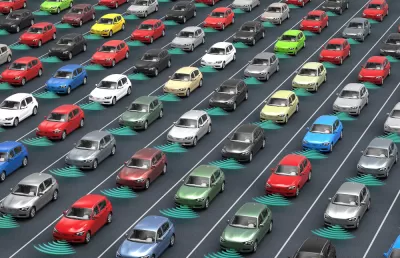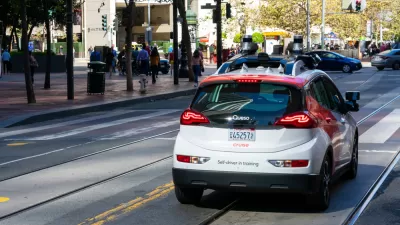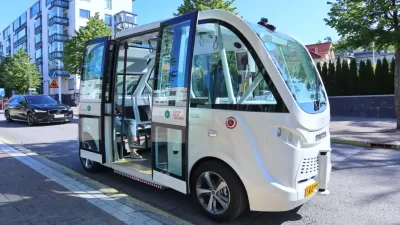Self-driving cars are likely to become part of the urban landscape in the future, and they have the potential to drastically alter urban environments—in good and bad ways.

"Unless cities pay close attention to how self-driving cars will shape their futures, experts say, they could easily repeat, and exacerbate, mistakes of the past," writes Katherine Shaver.
Widespread use of autonomous vehicles will not happen, realistically, for at least a couple decades, say experts. But planners, designers, and architects are thinking ahead to how the new technology could change land use and travel patterns, says Shaver.
"For example, because driverless vehicles will drop off passengers and move on, prime real estate now consumed by vast parking lots and unsightly garages could be freed up for more housing, parks, public plazas and open space, planners say," writes Shaver. In addition, streets would open up, making room for bike lanes and wider sidewalks.
Still, many questions remain about the long-term impacts of self-driving vehicles, with some predictions suggesting that they will not solve the parking, housing, and transportation problems of cities. If these vehicles make car travel easier, people might travel more, eschew transit, and decide to live farther out, with the result being increased sprawl.
"Even so, some planners are considering ways that governments could discourage such behavior, for example, via a per-mile tax to make driverless vehicle passengers feel and bear the costs of longer trips. Such a tax, supporters say, also might discourage empty vehicles from adding to traffic congestion by roaming streets in search of passengers," notes Shaver.
FULL STORY: City planners eye self-driving vehicles to correct mistakes of the 20th-century auto

Alabama: Trump Terminates Settlements for Black Communities Harmed By Raw Sewage
Trump deemed the landmark civil rights agreement “illegal DEI and environmental justice policy.”

Planetizen Federal Action Tracker
A weekly monitor of how Trump’s orders and actions are impacting planners and planning in America.

The 120 Year Old Tiny Home Villages That Sheltered San Francisco’s Earthquake Refugees
More than a century ago, San Francisco mobilized to house thousands of residents displaced by the 1906 earthquake. Could their strategy offer a model for the present?

BLM To Rescind Public Lands Rule
The change will downgrade conservation, once again putting federal land at risk for mining and other extractive uses.

Indy Neighborhood Group Builds Temporary Multi-Use Path
Community members, aided in part by funding from the city, repurposed a vehicle lane to create a protected bike and pedestrian path for the summer season.

Congestion Pricing Drops Holland Tunnel Delays by 65 Percent
New York City’s contentious tolling program has yielded improved traffic and roughly $100 million in revenue for the MTA.
Urban Design for Planners 1: Software Tools
This six-course series explores essential urban design concepts using open source software and equips planners with the tools they need to participate fully in the urban design process.
Planning for Universal Design
Learn the tools for implementing Universal Design in planning regulations.
Clanton & Associates, Inc.
Jessamine County Fiscal Court
Institute for Housing and Urban Development Studies (IHS)
City of Grandview
Harvard GSD Executive Education
Toledo-Lucas County Plan Commissions
Salt Lake City
NYU Wagner Graduate School of Public Service





























